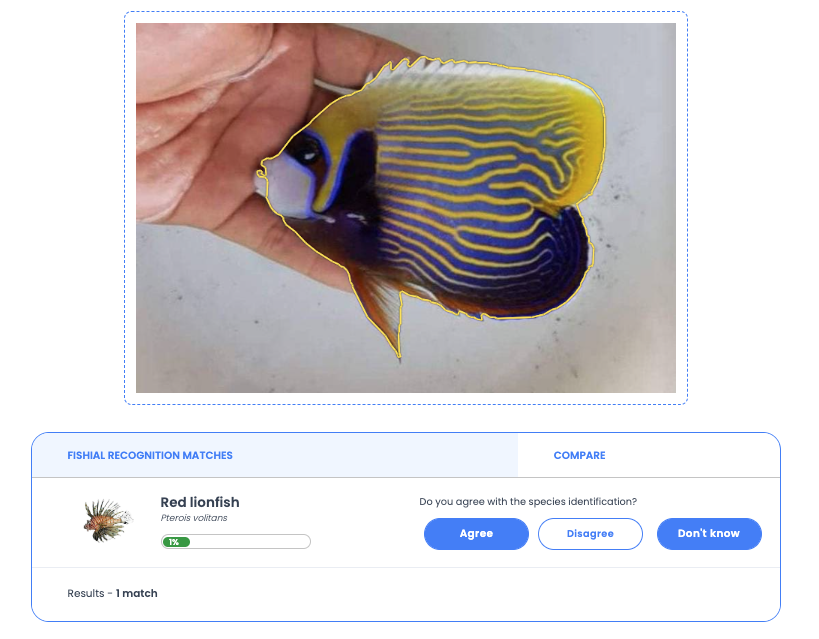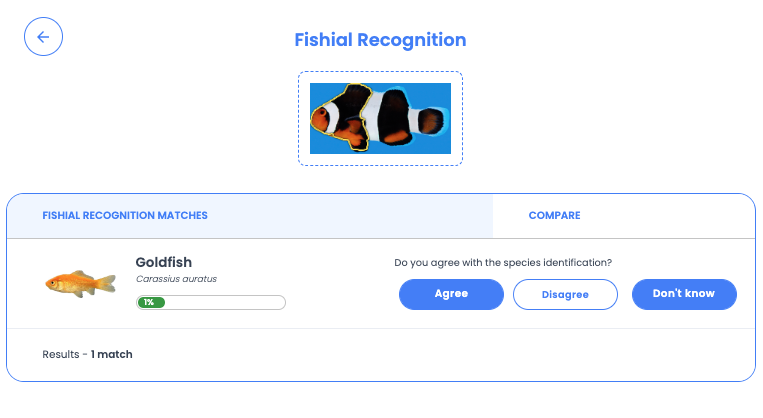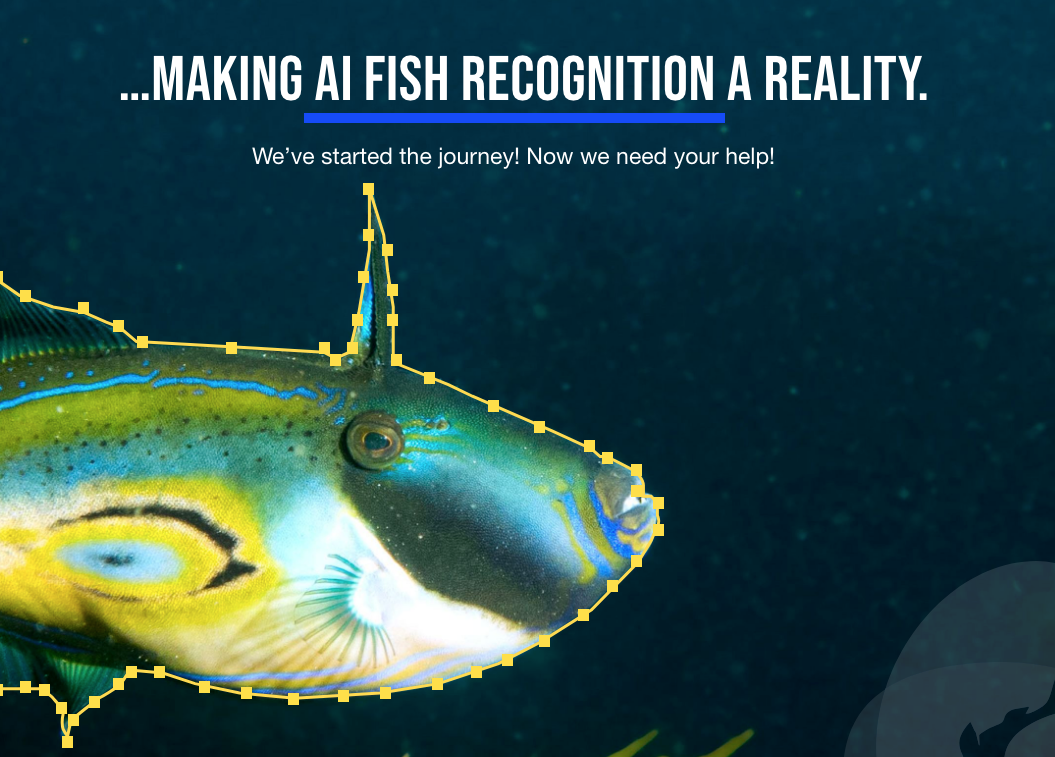A not-for-profit organization is aiming to use artificial intelligence to help ID the planet’s 34,000 fish species. The Fishial project has been set up by Thomas Wye of the Wye Foundation, to identify fish by photograph automatically, with the aim of aiding education, new species identification, fish tracking, and fishery management. To do this it has set up a website and then needs people to upload fish images as well as tagging the fish species, and adding the identifying attributes of each fish. Fishial Recognition, backed by a team of biologists and engineers, will then isolate specific traits with the aim of identifying all fish species worldwide.
Testing
We registered but had to watch a video after trying and failing to navigate the website to upload an image. Once uploaded it looks like you then draw a polygon around the fish (or it does it for you,) and then it identifies traits like mouth form, tail shape etc, only after uploading one image of a cichlid our image was still “processing,” after two hours. We then tried the identification tool. Uploading an image this time was as easy as drag and drop, but unfortunately, it guessed the ID of every fish picture we uploaded incorrectly. First, we tried a tailless Emperor Angelfish, which it identified as a Lionfish. Then we tried a Lake Victoria cichlid which it identified as a tilapia. Keen for it to work and cut the software some slack, we uploaded a Siamese Fighting Fish, Betta splendens, which it told us was a goldfish, followed by the unmistakable Common clownfish, which it also told us was a Goldfish. We finished with a Birchir, Polypterus endlicheri, which it identified as a Pike. We tried the same fish photos on Google Lens and although it didn’t get the Bichir (wrong shape for the square photo frame maybe?) it got the Angelfish, Clownfish, and the Betta first time.

What we think
We found Fishial because it was being promoted by an Aquatic business and was asking for help to upload fish photos. We’re not sure if the site we logged into and accessed was an extreme Beta test site, but for us, it was a total failure. Proper species identification is very important to us and before using the site we were wondering how it would cope with species revisions or incredibly similar fish species, both and fresh and saltwater, which have the same outline and morphology, like the Danio genus for example, or Apistogramma. What we found was that the AI was at such an early stage it just didn’t work, and that as of right now Fishial.AI is a million miles away from being credible or usable as a fish reference guide in any aquatic field.
The home page and press pack had the feel of a large charitable organization but once you go past that we found it very frustrating to use, and had to watch tutorials on everything. After that we got lost in the site, had windows open all over the place trying to get to the two most important parts – uploading our own fish photos and identifying fish from photos, and it didn’t work. We are aquarium people, not AI developers, so we’re guessing that Fishial Recognition needs lots of photos uploading to then scan similarities and start making better matches, but the process of uploading photos and information felt like a chore, and something so lengthy that we didn’t want it eating into our very limited spare time.

We’ve been identifying fish based on digital photos for over twenty years and advise that you really need the backing of an organization like Fishbase, which has already cataloged 34900 species, 325600 common names, with 61500 pictures, but really importantly its backed up by another 58900 references, from 2470 collaborators. And if fish ID gets super difficult, Ichthyologists live in the digital space too and you can even ask the world expert on deepwater gobies for example what they think it is. As long as you have a signal, you can get a fish species ID from anywhere in the world.
We promise to revisit Fishial.AI with its quirkily named Fishial Recognition. We want it to work and if it does it will become a very valuable resource. Google does reign supreme however and we are used to the instant nature of uploading photos to social media. We are sure there are some brilliant minds behind the project with tons of hope and ambition, but based on our short user experience versus just about every other resource online, it will take some epic artificial intelligence to catch up.



